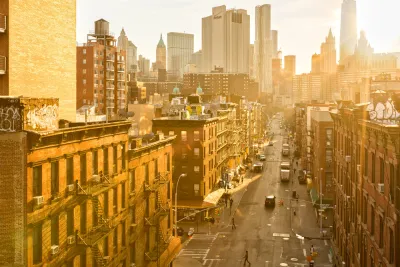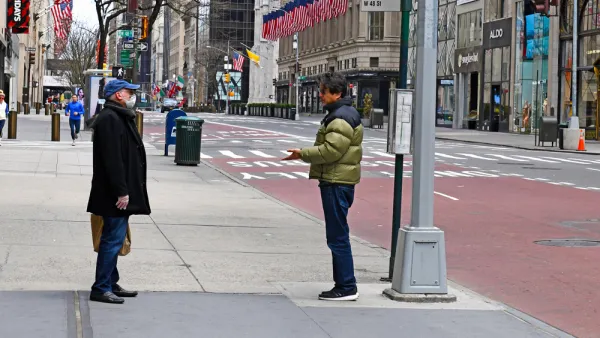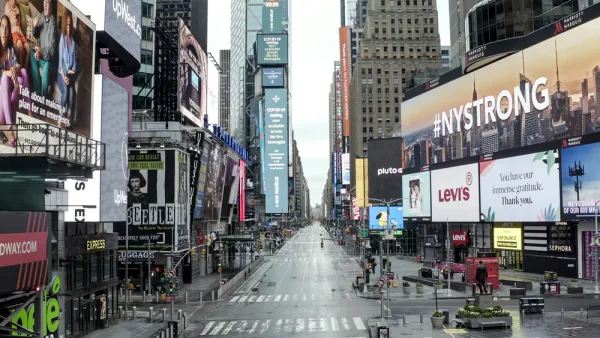Building more housing where people work is a simple way to come out of the pandemic with a stronger sense of community and shorter commutes, according to this article.

Pandemic lockdown has changed the way people relate to the cities in which they live, shop, and work. Increasingly, say Michael Hendrix and John Ketcham, the coronavirus pandemic has changed the way residents of the New York City region commute and shed light on the fact that under 'normal' circumstances, hordes of people commute into cities on a daily basis to get to work.
Hedrix and Ketcham opine that instead of allowing the commute to continue, planners and lawmakers should increase housing supply in commercial areas. Upzoning commercial areas, they say, will minimize commute times while improving neighborhood quality and individuals' quality of life.
The article urges for the transformation of New York City neighborhoods, its authors arguing that density controls and regulation opposing adaptive reuse are ultimately damaging to community vitality in the Big Apple. Not enough housing has been built in areas where jobs are growing. "An October 2019 report by the New York City Department of City Planning found that from 2009 to 2018, 700,000 new jobs were added in the city, compared with only 197,000 new housing units permitted," write Hedrix and Ketcham.
Given the decreasing demand for urban retail and office space, planners and politicians should begin to build housing in those areas where demand will ultimately crop up again. According to Hedrix and Ketcham. "With the right policies, this time of crisis can give way to more neighborhoods where we live, work, and play."
FULL STORY: More housing is the answer to less transit

National Parks Layoffs Will Cause Communities to Lose Billions
Thousands of essential park workers were laid off this week, just before the busy spring break season.

Retro-silient?: America’s First “Eco-burb,” The Woodlands Turns 50
A master-planned community north of Houston offers lessons on green infrastructure and resilient design, but falls short of its founder’s lofty affordability and walkability goals.

Delivering for America Plan Will Downgrade Mail Service in at Least 49.5 Percent of Zip Codes
Republican and Democrat lawmakers criticize the plan for its disproportionate negative impact on rural communities.

Test News Post 1
This is a summary

Test News Headline 46
Test for the image on the front page.

Balancing Bombs and Butterflies: How the National Guard Protects a Rare Species
The National Guard at Fort Indiantown Gap uses GIS technology and land management strategies to balance military training with conservation efforts, ensuring the survival of the rare eastern regal fritillary butterfly.
Urban Design for Planners 1: Software Tools
This six-course series explores essential urban design concepts using open source software and equips planners with the tools they need to participate fully in the urban design process.
Planning for Universal Design
Learn the tools for implementing Universal Design in planning regulations.
EMC Planning Group, Inc.
Planetizen
Planetizen
Mpact (formerly Rail~Volution)
Great Falls Development Authority, Inc.
HUDs Office of Policy Development and Research
NYU Wagner Graduate School of Public Service





























